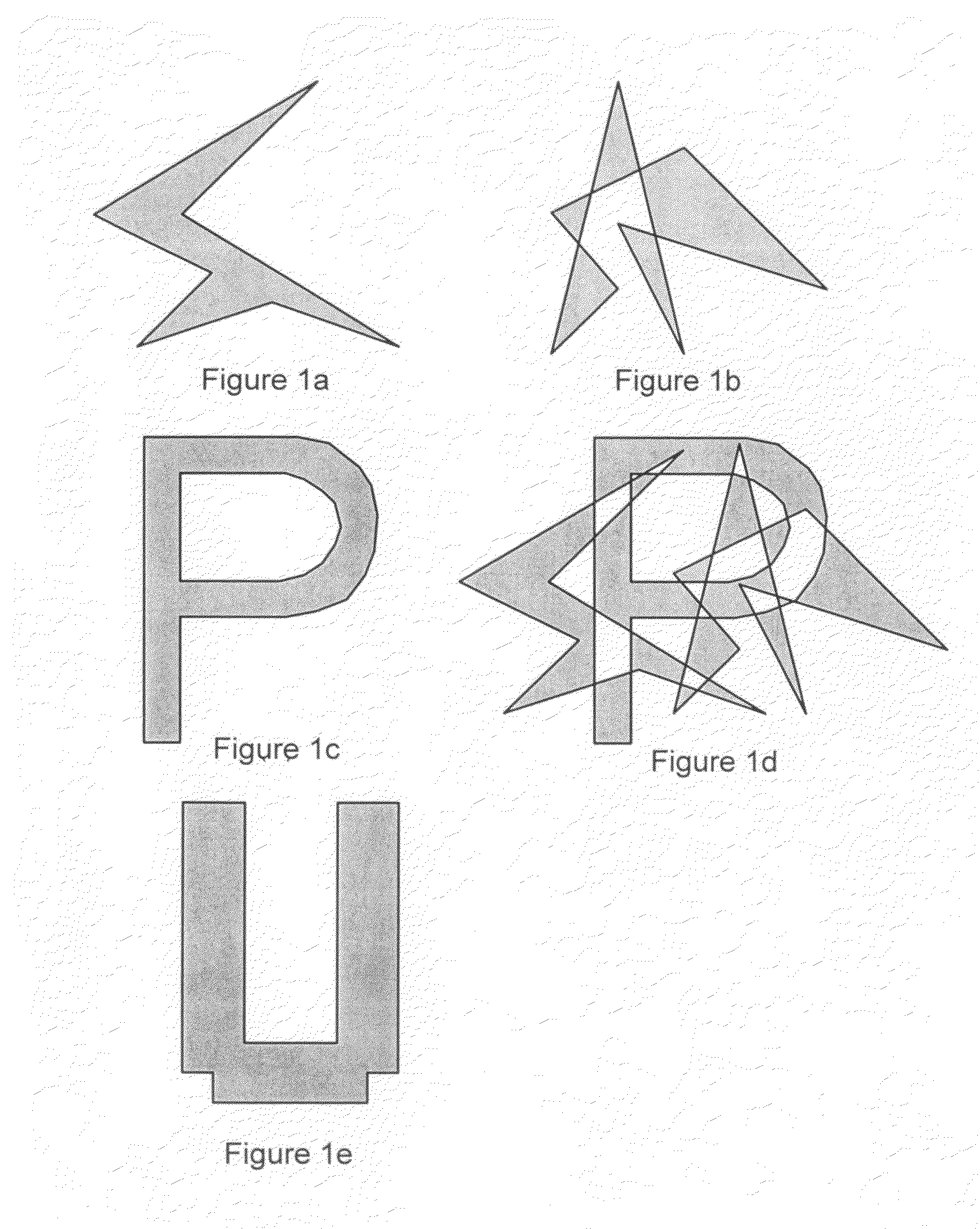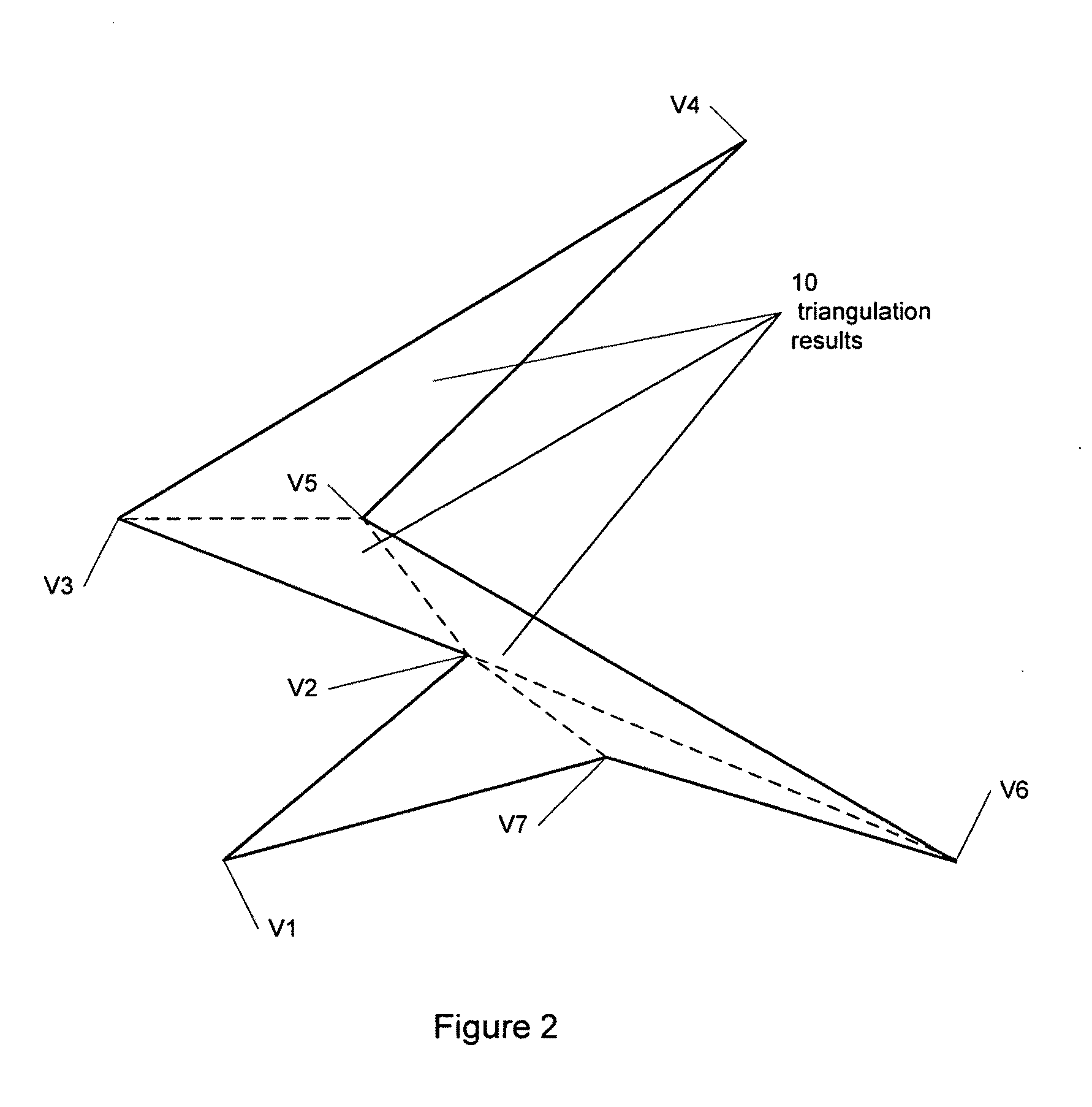Method and apparatus for rendering a computer generated image
a computer generated image and method technology, applied in the field of methods and apparatus for rendering computer generated images, can solve the problems of expensive identification of a ‘safe’ vertex, i.e., where the produced triangle is entirely inside the original polygon, and achieve the effect of reducing the cost of production
- Summary
- Abstract
- Description
- Claims
- Application Information
AI Technical Summary
Benefits of technology
Problems solved by technology
Method used
Image
Examples
first embodiment
[0080]For example, the process of step 2 applied to a single contour, to generate triangles (ie for P=3), in accordance with the invention will now be described. It is assumed that the contour has N-sides with vertices numbered from Base to Base+N−1:
StepSize := 1;WHILE( StepSize { / / generate all the triangles with this step sizeJ := 0;WHILE (J { / / Get the other two points that will make / / up this trianglePtB := MIN(J+ StepSize, N−1);PtC := MIN(J + 2*StepSize, N−1); / / if this is a non degenerate triangle...IF(PtB != PtC){ / / output triangle {J, PtB, PtC} relative / / to “base”OutputTriangle(J + Base,PtB + Base,PtC + Base);} / / Move to the next triangle in this setJ := J + 2*StepSize;} / / Double the step sizeStepSize := StepSize * 2;}
[0081]It should be appreciated that this simple algorithm can be realised in hardware by one skilled in the art using a language such as VHDL or Verilog and would require only a small number of components including adders, registers, and comparators.
[0082]FIG. 6 ...
second embodiment
[0087]A second preferred embodiment will now be presented that addresses these additional issues. This second embodiment incorporates the additional feature of a very small stack. Assuming the maximum number of vertices in a contour that will ever be encountered is NMax, then this stack needs at most ┌log2(NMax)┐+1 (ie ceiling(log2(Nmax))+1) entries. For example, if in a given system a contour could have at most 216 vertices, then the stack would have no more than 17 entries.
[0088]This embodiment provides interleaving of primitive levels to maximise vertex temporal locality and produces at least one second level primitive before all the first level primitives are produced. Primitive polygon level is reflected in the separation of the vertices of the primitive polygon relative to the vertices of the original arbitrary closed polygonal contour. A first level primitive has vertices which are contiguous vertices in the original closed polygonal contour. Higher level primitives have vert...
PUM
 Login to View More
Login to View More Abstract
Description
Claims
Application Information
 Login to View More
Login to View More - R&D
- Intellectual Property
- Life Sciences
- Materials
- Tech Scout
- Unparalleled Data Quality
- Higher Quality Content
- 60% Fewer Hallucinations
Browse by: Latest US Patents, China's latest patents, Technical Efficacy Thesaurus, Application Domain, Technology Topic, Popular Technical Reports.
© 2025 PatSnap. All rights reserved.Legal|Privacy policy|Modern Slavery Act Transparency Statement|Sitemap|About US| Contact US: help@patsnap.com



